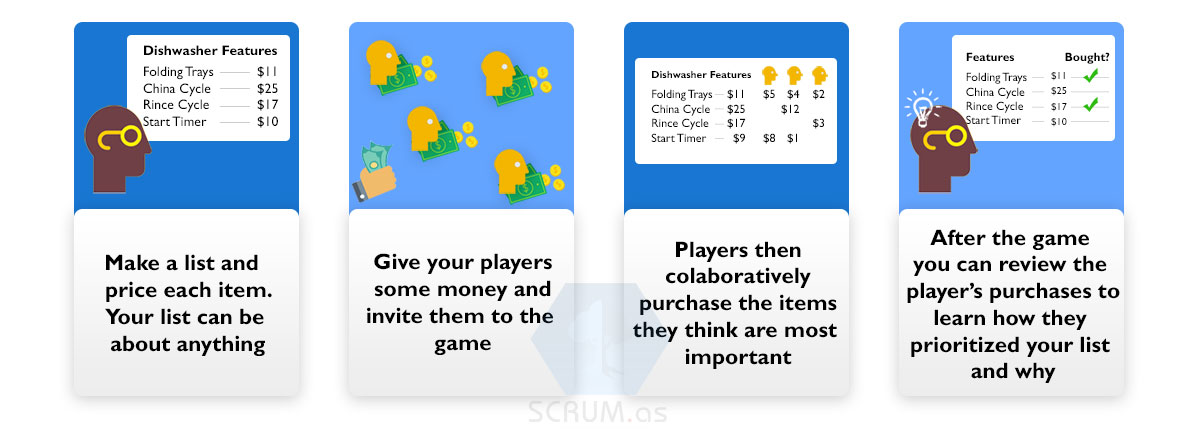Scrum.as - Blog
2019-03-27 - Agile Game. Buy a feature
Which feature will entice customers to purchase your product? Which feature will cause customers to upgrade? Which feature will make customers so happy that they will ignore or tolerate the features that they wish you would fix or remove?
Product planners endlessly debate these and other kinds of questions. Choosing the right set of features to add to a release often marks the difference between short-term failure or long-term success. Unfortunately, too many product planners make this choice without involving the people most affected by it—their customers. The Buy a Feature collaboration framework improves the quality of this decision by asking your customers to help you make it.

The game
Create a list of potential features and provide each with a price. Just like for a real product, the price can be based on development costs, customer value, or something else. Although the price can be the actual cost, you intend to charge for the feature, this is usually not required. Customers buy features that they want in the next release of your product using play money you give them. Make certain that some features are priced high enough that no one customer can buy them. Encourage customers to pool their money to buy especially important and/or expensive features. This will help motivate negotiations between customers as to which features are most important.
This game works best with four to seven customers in a group, so that you can create more opportunities for customers to pool their money through negotiating. Unlike the Product Box coll, the Buy a Feature game is based on the list of features that are likely to be in your development roadmap.
Why It Works
Product planners often fall into the trap of thinking that customers have clearly defined product priorities. Some do. Most do not. When presented with a set of options, many customers will simply say, “I want them all” and put the responsibility for prioritizing their requests on your shoulders. Alternatively, product managers often gather feature priorities by working with customers one-on-one and, in the process, and perhaps without even realizing it, again take responsibility for prioritizing features. By engaging customers as a group and giving them a limited amount of resources, you give them the opportunity to prioritize their desires as a group. However, that is not where the magic lies. The magic lies in structuring the conversations so that your customers are negotiating with each other for specific features. It is this negotiation that enhances your understanding of what your customers really want.
Author: Steen Lerche-Jensen
Copyright © 2018 - 2025 by Scrum.as // All Rights Reserved. // Privacy Policy






